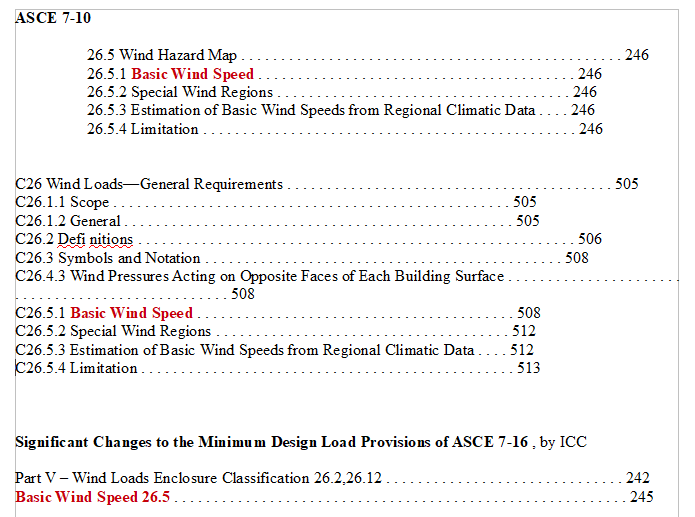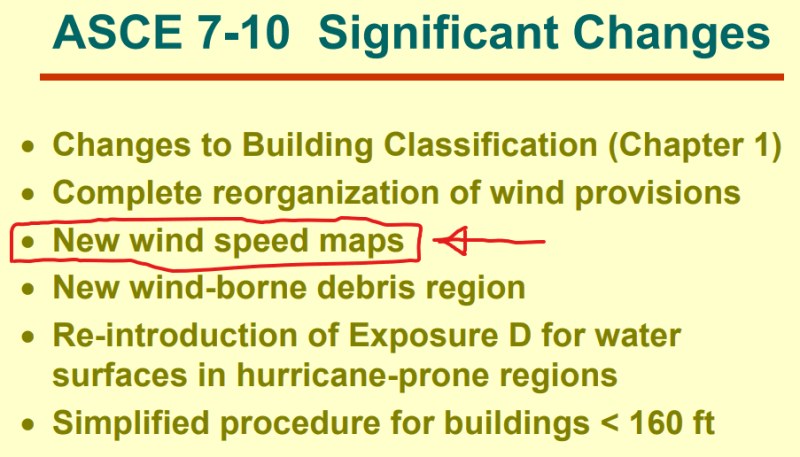Ron247
Structural
- Jan 18, 2019
- 1,146
I still use ASD design loads but find myself having to explain USD concepts for wind to someone. Take the following situation. The ASCE 7-16 Risk Cat II wind map shows a 160 mph for his county. Let’s also assume there will be a floor live load of 100 psf for a bar/restaurant. If a USD design is used:
[ul]
[li]Would I tell the Owner his floor is designed for 100 psf or 160 psf (1.6x100)? My answer is 100.[/li]
[li]In wind, I am not referring to what I would write on my drawings, but what would I tell the Owner? Would I tell the Owner his building is designed for 160 mph wind or something much less than 160 mph? Since there is no overload factor applied to wind, I assume the new wind maps have already had the wind speed bumped up to include the overload factor. I also assume the seismic has been bumped up since it also has a 1.0 overload factor. Am I wrong about this?[/li]
[li]If an actual sustained wind speed of 150 mph is recorded, should the Owner expect his building to survive with minor non-structural damage?[/li]
[/ul]
I grew up when only concrete was USD. Now that it is commonplace, I find it harder to explain how it works to a layperson than it is to do the calculations. Usually, it is the other way around. Also, why is Dead only multiplied by 1.2 in the combinations? Overload factors used to have to do with both uncertainty and providing a cushion between the failure load. 20% seems slim to me.
[ul]
[li]Would I tell the Owner his floor is designed for 100 psf or 160 psf (1.6x100)? My answer is 100.[/li]
[li]In wind, I am not referring to what I would write on my drawings, but what would I tell the Owner? Would I tell the Owner his building is designed for 160 mph wind or something much less than 160 mph? Since there is no overload factor applied to wind, I assume the new wind maps have already had the wind speed bumped up to include the overload factor. I also assume the seismic has been bumped up since it also has a 1.0 overload factor. Am I wrong about this?[/li]
[li]If an actual sustained wind speed of 150 mph is recorded, should the Owner expect his building to survive with minor non-structural damage?[/li]
[/ul]
I grew up when only concrete was USD. Now that it is commonplace, I find it harder to explain how it works to a layperson than it is to do the calculations. Usually, it is the other way around. Also, why is Dead only multiplied by 1.2 in the combinations? Overload factors used to have to do with both uncertainty and providing a cushion between the failure load. 20% seems slim to me.






